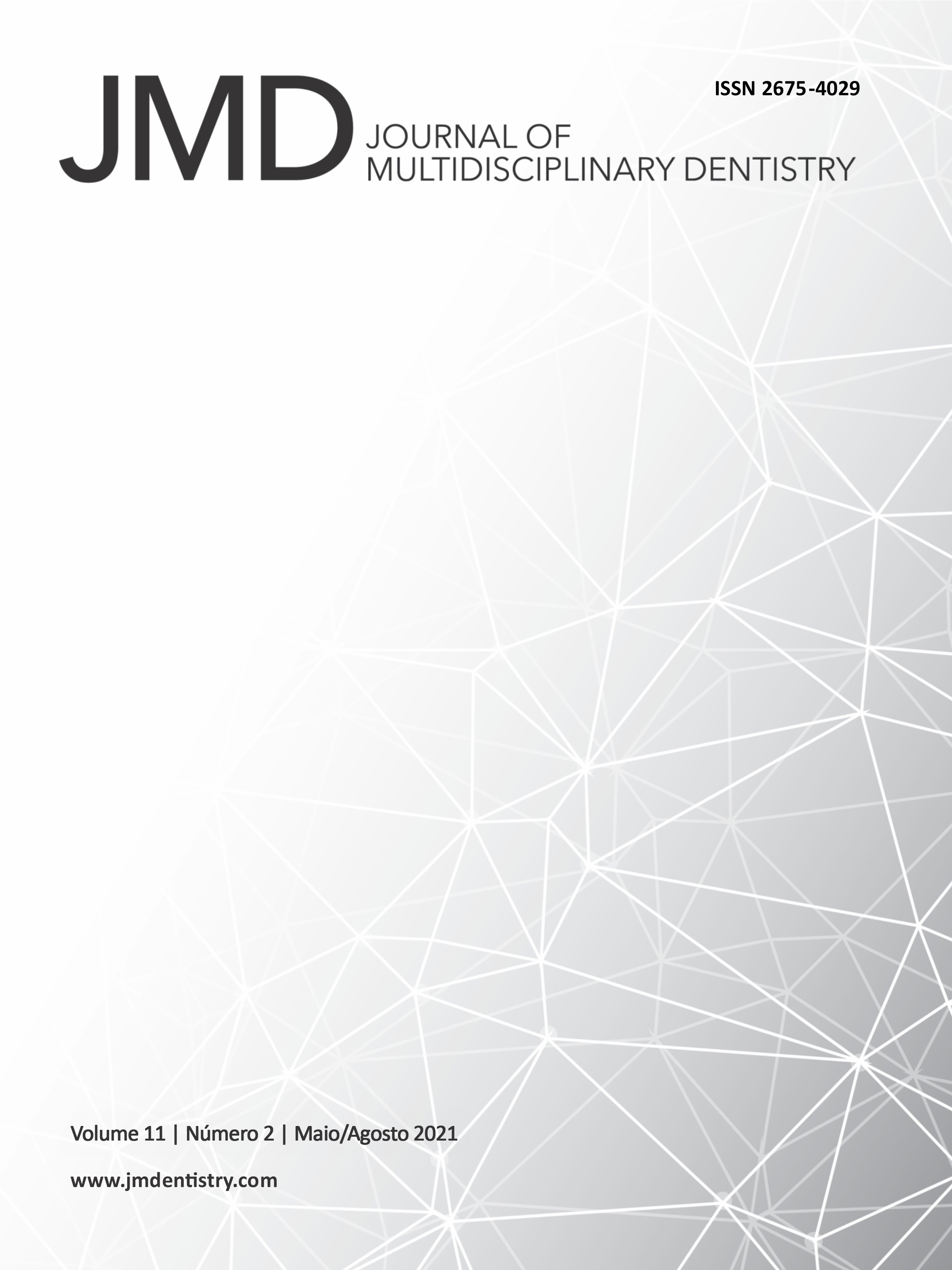Differential diagnosis of expansion and disjunction using frontal cephalometric analysis of Ricketts: case reports
DOI:
https://doi.org/10.46875/jmd.v11i2.790Keywords:
Diagnosis, differential, Palatal expansion technique, Orthodontics, correctiveAbstract
Deficiency of transverse growth of the jaw can cause a cross bite. Generally, clinical analysis and model analysis are used as diagnostic tools. However, these means of diagnosis are very subjective and it is difficult to determine whether the individual has maxillary atresia or not due to a skeletal deficiency. Therefore, the purpose of this clinical case report is to demonstrate how the frontal radiograph and Ricketts frontal cephalometric tracing can assist in the differential diagnosis between a dentoalveolar expansion and a maxillary bone disjunction. Two patients were selected with posterior crossbite. Through frontal radiography, it was possible to observe that case 1 did not present changes in the maxillomandibular distance, characterizing it as a dental malocclusion. Case 2 presented changes in maxillomandibular distances, with skeletal changes. Thus, it was possible to indicate the best type of treatment for both cases. Objective diagnostic methods are extremely important to provide the patient with a more accurate treatment without side effects. For this reason, Ricketts' frontal teleradiography has become a decisive tool for making the differential diagnosis between maxillary expansion and disjunction.


